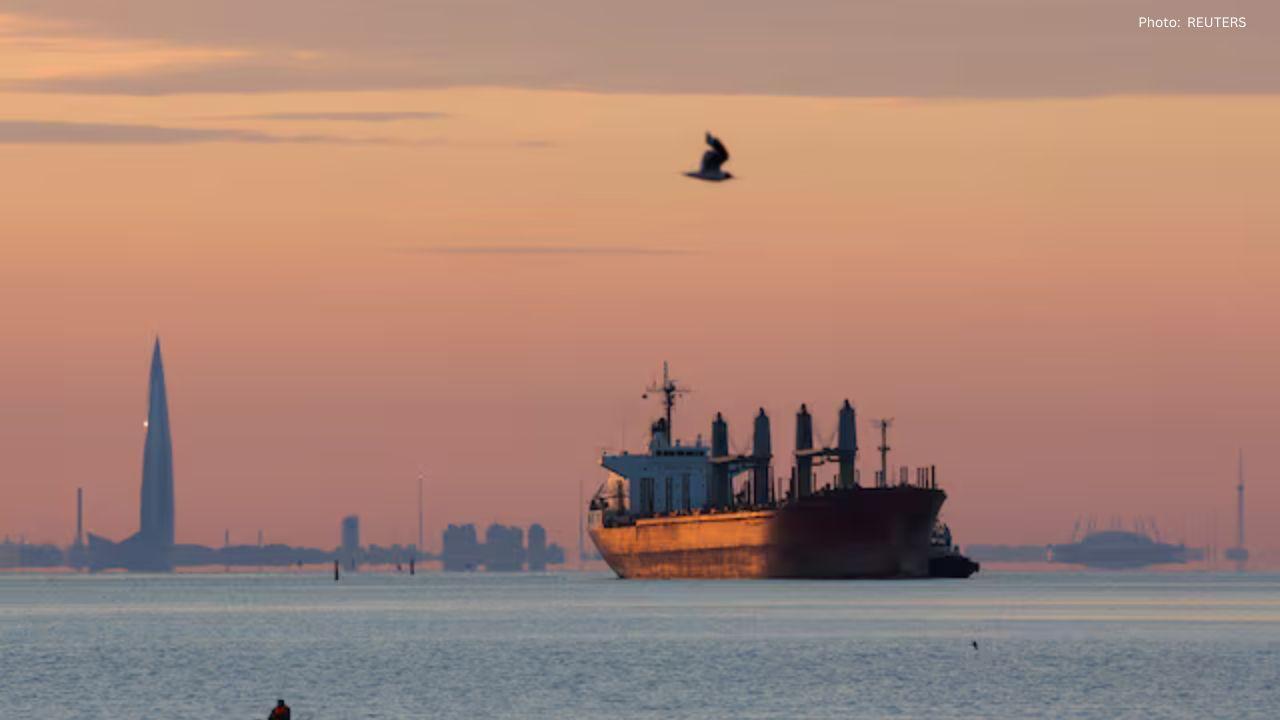
Post by : Anees Nasser
In the Asia-Pacific region, summer has transformed from a pleasant respite between spring and fall to an increasingly arduous season. Early arrivals, extended durations, and relentless heat have taken over. Many cities, once known for their moderate climates, now face temperatures reminiscent of arid deserts. Residents experience this ever-increasing heat not just as a temporary irritant but as a persistent challenge affecting numerous aspects of their lives.
This gradual warming might escape daily attention, yet it profoundly alters the norms of work, travel, and health. Schools are modifying schedules, workplaces are enhancing cooling systems, and hospitals report an uptick in heat-related health complications, underscoring that this season transcends mere weather; it has evolved into a significant environmental dilemma.
The Asia-Pacific is acutely susceptible to rising temperatures due to the presence of highly populated urban areas. The surge in construction, diminishment of greenery, and reliance on concrete have created "heat islands" where warmth accumulates during the day and dissipates slowly through the night. Consequently, cities remain perilously warm even after sunset.
Coastal areas face heightened challenges from rising ocean temperatures, which exacerbate humidity and disrupt established weather patterns. Mountainous regions lose their snow earlier, diminishing summer cooling effects, while rural zones grapple with dwindling water resources that once helped moderate local temperature extremes. Climate change does not impact uniformly; it affects the Asia-Pacific region with enhanced intensity.
Heat becomes more than a minor bother; it now poses a substantial health risk. Extended exposure to severe heat strains the heart, kidneys, and nervous system. While older adults, outdoor laborers, and children are especially vulnerable, no demographic is entirely safe.
Heat exhaustion, dehydration, and sunstroke are increasingly common during routine tasks like commuting or classroom attendance. Many experience disrupted sleep cycles due to unbearably warm nights, hindering proper recovery. Hospitals witness a surge in patients suffering from respiratory issues and heat-related ailments throughout the summer months.
This danger of heat is its subtlety. Unlike tornadoes or floods, heat offers no dramatic indicators, leading to gradual encroachments into everyday life that escalate into emergencies.
Outdoor jobs including construction, farming, and delivery have become significantly riskier during peak summer. Workers now confront elevated risks of heat collapse and chronic health issues. Employers are beginning to revise work schedules, instituting early morning or late evening shifts and mandating breaks in air-conditioned environments.
Office dynamics are shifting too, with surging energy costs for cooling. Organizations are reevaluating remote work policies based on regional heat risks rather than mere productivity assessments. The impact on productivity arises not from a lack of motivation but from the draining effects of heat on energy and concentration.
The workday is now influenced more by temperature than by time.
Farmers throughout the Asia-Pacific are observing alterations in planting cycles and shifts in crop yields. Cultivations that once thrived now demand additional water, fertilizers, and pest protections. Heat stress diminishes crop productivity and occasionally leads to total harvest losses.
Livestock also bear the brunt of extreme temperatures, suffering from dehydration, diminished fertility, and heightened susceptibility to diseases during prolonged heat periods. This situation results in increased food prices and reduced availability in local markets.
Urban households experience these changes subtly but significantly, facing rising grocery bills and fluctuating food quality. Food security now intertwines increasingly with climate rather than being a solely economic concern.
Heightened temperatures accelerate water evaporation, leading to reservoirs struggling to replenish. Rivers dwindle, groundwater levels plummet, and rainfall patterns grow erratic. Urban centers reliant on seasonal rains now confront extended dry spells interspersed with severe flooding.
Competition for water arises between urban areas and agriculture, with domestic water usage restrictions becoming commonplace. Municipal authorities often issue warnings and impose rationing during peak heat events.
Water supply, once a given, is evolving into a pivotal political and social concern.
Many cities in the Asia-Pacific were not designed to withstand extreme heat. Infrastructure, including roadways, housing, and transportation systems, was planned for climates that are now obsolete. Roads melt under what were once considered extraordinary temperatures, railways warp, and electrical systems reach overloads.
Low-income neighborhoods suffer the gravest consequences, facing inadequate cooling structures and insufficient green spaces. Heat exposure can vary greatly across densely populated areas based on vegetation and building materials.
Urban planning has emerged as a matter of climate adaptation as much as it is of architecture.
Constant discomfort cultivates frustration, anxiety, and emotional fatigue. Elevated temperatures disrupt sleep, increase irritability, and diminish patience levels. For individuals already facing mental health challenges, heat adds an often-unnoticed burden.
During the summer, children may exhibit heightened aggression in schools. Adults may struggle with focus and experience increasing stress levels. Communities aren't just strained economically; they also face the toll of physical exhaustion.
Heat steadily erodes resilience.
Once-desirable summer destinations are losing their appeal due to extreme weather conditions. Tourists are increasingly gravitating towards cooler seasons or elevated locales. The travel sector is adapting by renegotiating pricing, altering travel times, and reassessing safety protocols.
Coastal areas confront erosion linked to rising sea levels, while popular hill retreats are overwhelmed as people flee the heat. Traditional travel periods are reshaped as climate shifts render earlier patterns obsolete.
Travel, like agriculture, is being reshaped by temperature dynamics.
Air conditioning, previously regarded as a luxury, is swiftly becoming essential. Fans no longer suffice. Sales of cooling devices have surged as households prioritize survival over casual comfort.
However, this shift presents its own challenges. Increased use of cooling apparatus places extra strain on power grids and exacerbates carbon emissions if energy sources remain fossil fuel-based. This results in a dangerous cycle where the measures intended to mitigate heat inadvertently contribute to greater heat generation.
Unless energy frameworks evolve swiftly, essential survival tools may worsen the issues they aim to alleviate.
Adaptation has become a necessity. Governments must:
Redesign urban infrastructure
Enhance green coverage
Refine water management strategies
Fortify healthcare systems
Prepare emergency responses for heat challenges
Revise construction guidelines and housing regulations
Yet, policy adaptation often lags behind the pace of rising temperatures. Such delays risk transforming discomfort into crisis.
Effective leadership is no longer about long-term planning.
It's a race against time.
Longer and more severe heat episodes.
Escalating energy expenses.
Seasonal limitations on water access.
Modifications to work hours.
Routine health guidance due to heat.
Surging food prices.
Transformations in housing demands.
Migration from overheated locales.
Climate change is no longer a distant concern.
It arrives annually.
The Asia-Pacific is entering a new era of climate reality. Familiar weather patterns are faltering. Heat, once an occasional peak, is now transitioning to a new norm.
Adaptation does not equate to dread. It embodies awareness.
As cities evolve and lifestyles adapt, everything increasingly reacts to rising temperatures.
And temperatures are climbing.
Preparation today is not about pessimism.
It's a survival strategy.
DISCLAIMER
This article is designed for general awareness and informational efforts only. It does not substitute for scientific, environmental, or medical advice. Climate conditions are variable by location, and readers should consult local authorities' advisories and climate reports for accurate updates.










Duke Triumphs Thanks to Cameron Boozer's 35-Point Showcase Against Arkansas
Duke secures an 80-71 victory over Arkansas as Cameron Boozer scores 35 points, celebrating Thanksgi

Palash Muchhal's Health Update Following Wedding Stress Incident
Palash Muchhal has been discharged after being hospitalized due to a stress-related issue from his w

Ajay Devgn Reflects on 28 Years Since Ishq’s Release
Ajay Devgn marks 28 years of Ishq with heartfelt memories and celebrates the impact the film had on

Saudi Arabia Set to Launch Women's World T20 Challenge in 2026
Starting in 2026, Saudi Arabia will host its first women's professional cricket tournament, featurin

Ayush Mhatre Appointed Captain of India for Under-19 Asia Cup in Dubai
The BCCI announces Ayush Mhatre as captain for the Under-19 Asia Cup starting December 12, highlight

Virat Kohli Visits MS Dhoni's Home in Ranchi Ahead of ODI
Kohli's visit to Dhoni's home sparks excitement among fans in Ranchi before the India–South Africa O